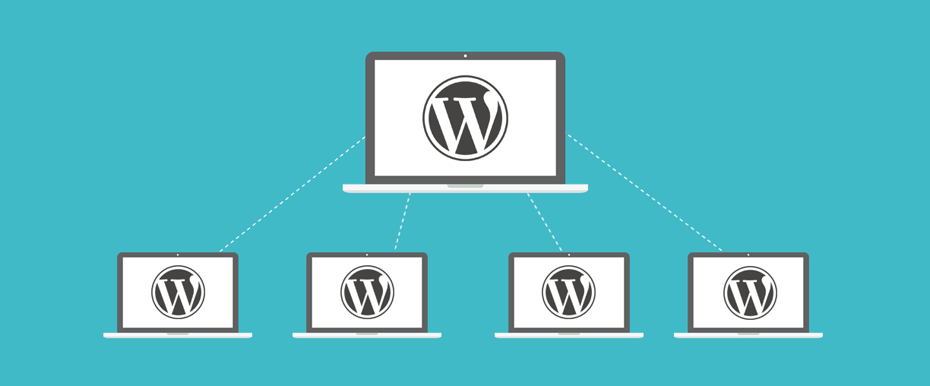Migrating from a WordPress Multisite network to a standalone WordPress site is a process that requires planning, attention to detail, and some technical know-how. Whether you’re moving just one site from a network of many or migrating an entire network, it’s essential to understand the steps involved to ensure a smooth transition.
In this blog post, we’ll walk you through a detailed step-by-step guide on how to manually migrate a site (or sites) from a WordPress Multisite to a standalone WordPress installation.
What is WordPress Multisite?
WordPress Multisite allows you to run multiple websites from a single WordPress installation. It’s an excellent solution for businesses or organizations managing several sites with shared resources (themes, plugins, etc.). However, there may be times when you want to break out of the Multisite setup and migrate a site to its own standalone WordPress installation, either for performance reasons or the need for greater control over individual sites.
Why Migrate from WordPress Multisite?
There are various reasons why you might want to migrate a site from a WordPress Multisite network to a single installation:
- You need to scale and manage a single site independently.
- You’re moving from shared hosting to a dedicated server or other hosting solutions.
- You’re splitting a site off into its own brand or project.
Whatever your reasons, migrating a WordPress Multisite site to a standalone WordPress site can give you more flexibility and control over your website.
Step 1: Backup Your Multisite Network
Before starting any migration, always back up your WordPress Multisite network. This backup ensures you can restore everything if anything goes wrong during the migration process.
To back up your network:
- Database Backup: Go to your hosting control panel and use phpMyAdmin to export your entire database. Alternatively, use a plugin like UpdraftPlus or BackupBuddy for an easier backup process.
- File Backup: Use an FTP client (like FileZilla) to download all your files, including the
wp-contentfolder (which contains themes, plugins, and uploads).
This backup is critical, as it provides a safety net and helps you preserve all your data if anything goes wrong.
Step 2: Create a New Standalone WordPress Installation
After securing your backup, it’s time to set up your new standalone WordPress site. You can do this on a local environment, staging site, or a new server.
- Download the Latest WordPress Version: You can download the latest version of WordPress from wordpress.org.
- Install WordPress: Upload WordPress to your server, create a new database for the new site, and connect WordPress to that database by editing the
wp-config.phpfile. - Set Up Basic Settings: Complete the WordPress installation, and set up basic configurations (site title, timezone, permalink structure).
Now that you have a clean WordPress installation ready, let’s move on to the migration process.
Step 3: Export Content from Multisite
Each site in a WordPress Multisite network operates with its own set of tables in the database, making it a bit tricky to export and import content. Fortunately, WordPress provides an export tool that allows you to export the content of a single site.
To export content:
- Go to Network Admin > Sites.
- Click Dashboard for the site you want to export.
- In the site’s dashboard, go to Tools > Export.
- Choose All Content or select specific content you want to export (posts, pages, media, etc.).
- Click Download Export File. This will create an XML file containing the content of that specific site.
Repeat this process for each site you wish to migrate.
Tip: You can also use a plugin like All-in-One WP Migration to make the export process more manageable if you have complex data or custom fields.
Step 4: Export the Database Tables for Each Site
Since each site in a Multisite network uses its own set of database tables, you’ll need to export the tables associated with the specific site you want to migrate.
- Access phpMyAdmin: Go to your hosting control panel and open phpMyAdmin.
- Identify the Site Tables: Find the site you want to migrate. For instance, if you’re migrating site 2, look for tables like
wp_2_,wp_2_posts,wp_2_options, etc. - Export the Tables: Select all tables for that site, and click the Export tab to generate an SQL file.
These exported tables are crucial for moving your site’s content, options, settings, and more. You can manually move the necessary tables or use a migration plugin to help with this step.
Tip: If you use a plugin like WP Migrate DB, it can simplify exporting the database, especially when you need to handle serialized data.
Ready to optimize your marketing and sales funnels? Contact us today for strategies and tools that will help you attract, engage, and convert leads faster than ever before!
Step 5: Set Up the New Standalone WordPress Site
On your new WordPress installation, follow these steps to prepare for the migration:
- Install Themes and Plugins: Install the same theme(s) and plugins you used in your Multisite network.
- Configure Basic Settings: Set up your general WordPress settings such as the site title, tagline, and permalinks.
- Install Importer Plugin: Install the WordPress Importer plugin or All-in-One WP Migration to help you import the exported XML file.
Step 6: Import Content Into the New Site
Now, it’s time to import the content from your Multisite export file to the new standalone site.
- In your new WordPress installation, go to Tools > Import.
- Choose WordPress and install the importer plugin if necessary.
- Upload the XML file you exported earlier and click Upload file and import.
- During the import process, WordPress will ask if you want to import attachments (media). Ensure you check the box to import attachments so that all images and media are transferred.
Once the content is imported, check the new site to ensure everything appears as it should.
Step 7: Update URLs
Since your old site may have used a different URL structure (subdomains or subdirectories), you’ll need to update the URLs in the database to reflect the new domain and structure.
You can do this with a plugin like Better Search Replace or run a direct SQL query to replace the old URL with the new one.
- Install the Better Search Replace plugin.
- In Tools > Better Search Replace, search for your old Multisite URL and replace it with your new site URL.
- Run the search-and-replace operation across all the tables.
Note: Be very cautious when replacing URLs in the database, as a wrong change can break your site.
Step 8: Transfer Themes and Plugins
For your site to function exactly as it did in the Multisite setup, you’ll need to install the same themes and plugins you were using. Ensure that:
- The theme is installed and activated.
- Plugins are installed and reconfigured.
Any custom configurations, widgets, or settings will also need to be manually migrated.
Step 9: Check Media and Internal Links
After importing content and transferring your themes and plugins, check that:
- All media files are correctly linked and appear in the media library.
- Internal links within posts or pages point to the new URLs.
You may need to manually edit any hardcoded links in your theme files.
Step 10: Test Your Site
Before you finalize the migration, thoroughly test your new site. Ensure that:
- All pages and posts are displaying correctly.
- Links are working as expected.
- Media files (images, videos, PDFs) are properly displayed.
- The site’s functionality is intact.
Bonus Step: Redirect Old URLs
If your site previously existed under a subdomain or subdirectory, set up 301 redirects from the old URLs to the new ones. This will ensure that any traffic to the old URLs is redirected to your new standalone site, preserving SEO value and preventing broken links.
You can set up redirects in your .htaccess file or use a plugin like Redirection to handle this for you.
Conclusion
Migrating from a WordPress Multisite to a standalone WordPress site can seem daunting, but with careful planning and the right tools, it can be done smoothly. By following this step-by-step guide, you’ll be able to migrate your site(s) safely while preserving your content, media, and configurations.
Remember, it’s crucial to back up your data before beginning the migration process, and always test your site thoroughly once the migration is complete.
If you run into any issues or need help with specific steps, feel free to reach out, and we’ll be happy to assist you!


Leave a Reply